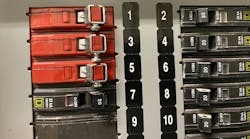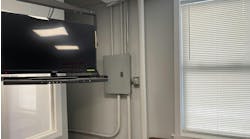How well do you know the Code? Think you can spot violations the original installer either ignored or couldn’t identify? Here's your chance to moonlight as an electrical inspector and second-guess someone else's work from the safety of your living room or office. Can you identify the specific Code violation(s) in this photo? Note: Submitted comments must include specific references from the 2023 NEC.
Hint: An alarming identification method
Tell Them What They've Won…
Using the 2023 NEC, correctly identify the Code violation(s) in this month's photo — in 200 words or less — and you could win an Arlington Industries 18-in. Slider Bar and plastic box for mounting between studs with non-standard spacing. E-mail your response, including your name and mailing address, to [email protected], and Russ will select three winners (excluding manufacturers and prior winners) at random from the correct submissions. Note that submissions without an address will not be eligible to win.
January Winners
Our winners this month were Mark De Angelis, an EC&M reader from Pembroke, N.H.; Ronnie Morales, a fire systems inspector for the City of Temecula, Calif.; and Cassandra Knapp, a participant from Corinth, Miss. They were able to correctly cite some of the Code violations in this photo.
Section 408.7 requires unused circuit breaker openings to be closed with closures identified for that purpose or some other approved means that could provide protection equivalent to the enclosure walls. Section 110.12(A) also requires unused openings to be closed up. Installing circuit breakers from several different manufacturers may be a violation of Sec. 110.3(B) if the breakers are not listed for use with this particular panelboard.
The lack of descriptors for many of the circuits is a violation of Sec. 408.4(A). Each circuit must be clearly marked to indicate its specific purpose. Even the spare positions containing an overcurrent device are required to be marked to indicate they are spares, per Sec. 408.4(A)(3). Lastly, Sec. 110.27(A) requires live parts to be guarded against accidental contact by approved enclosures.






